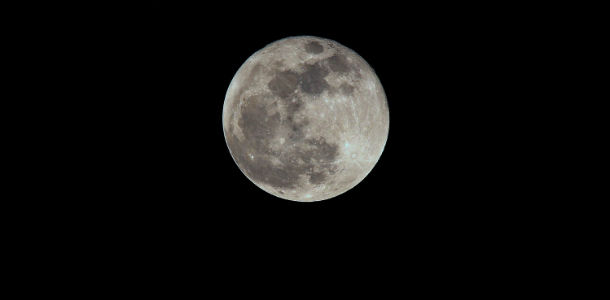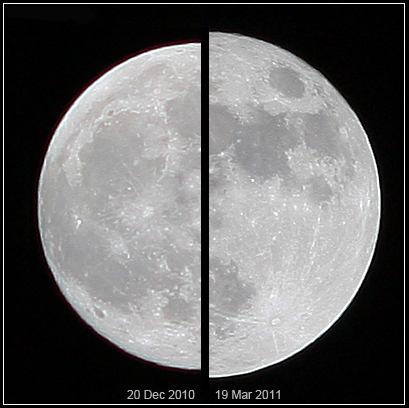Supermoon falls on May 24-25, 2013

The full moon of May, 2013 is the third full moon after the March equinox. The moon is only one day away from lunar perigee, when it reaches closest point to Earth. The May 24/25 moon stays almost opposite the sun during the whole night, so it will rise in the east around sunrise, climb highest up in the sky around midnight and to set in the west around sunrise. When observed from most of the planet, at the time the moon rises on the evening of May 25, it will be a waning moon.
A situation like this is known as Supermoon effect.It happens when the moon is slightly closer to Earth in its orbit than on average, and when it occurs at the same time as a full moon. That's why the moon may seem bigger although the difference in its distance from Earth is only a few percent at such times.
According to David Morrison, from NASA, “supermoon” is not an astronomical term and it has no effect on Earth, the change in size is hardly noticeable to the average person. If you miss it, the Moon will be very nearly as close at the next full Moon, and very nearly as close as it was at the last full Moon.

The "Supermoon" of March 19, 2011 (right), compared to a rather "average" moon of December 20, 2010 (left) (Credit: Marco Langbroek, the Netherlands)
A penumbral lunar eclipse will also occur on May 24/25, 2013 with a magnitude of 0.0158, just 0.5 arc-minutes of the Moon's southern limb. Moon will pass through Earth's pale outer shadow. According to NASA eclipse expert Fred Espenak at the Goddard Space Flight Center, penumbral lunar eclipse will be primarily visible from the Americas and western Africa.
Eclipse will be webcast online by the Slooh Space Camera at 03:37 UTC on May 25, 2013.
It is worth mentioning, that just after the supermoon a triple conjunction of planets will occur on May 26, 2013, when Venus, Jupiter and Mercury will form a tight triangle only three degrees wide. Triple conjunctions of planets are fairly rare. The last time it occurred was on May 9, 2011, and it won’t happen again until October 2015. This years conjunction is exceptional because it involves three brightest planets in the night sky, and will be visible even in urban areas with heavy light pollution.
Sources: EarthSky
Featured image: Supermoon seen from Longjing Township,Taichung County,Taiwan on May 6, 2012. (Credit: Wikimedia)

Commenting rules and guidelines
We value the thoughts and opinions of our readers and welcome healthy discussions on our website. In order to maintain a respectful and positive community, we ask that all commenters follow these rules:
We reserve the right to remove any comments that violate these rules. By commenting on our website, you agree to abide by these guidelines. Thank you for helping to create a positive and welcoming environment for all.